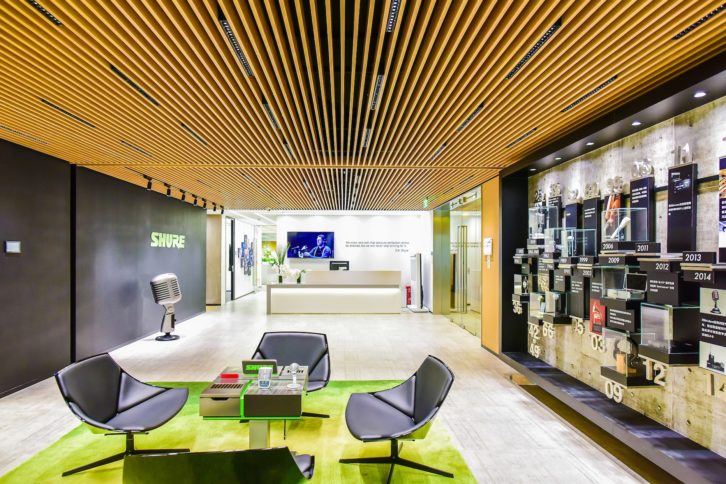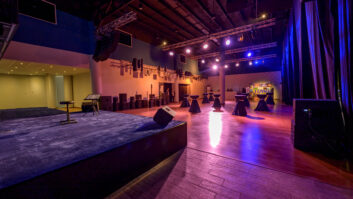
Experience creation may have started its AV life in the attractions sector, but its influence has now permeated most areas of pro AV, with corporate in particular putting user experience (UX) front and centre in recent months.
AV technology is now being thoughtfully combined within corporate space and content to ensure that integrators and other stakeholders help to deliver solutions that enhance the enterprise environment.
Today’s diverse challenges to business (Brexit being the ‘gift’ that keeps on giving!), have forced decision-makers to look to AV to help accelerate their enterprises, with a burgeoning focus on UX as a way of ensuring improved productivity, decent returns on investment and the pick of the best staff.
Experience, of course, can be defined as anything users interact with, and simplicity and intuitiveness is key. Experiences are only effective when the end user has an easy pathway, and in the corporate space the need for a well thought out, detailed consultation at the beginning of the process is essential.
“The right experience can unlock productivity and creativity that would not be realised in traditional environments”
Stuart Davidson, AVMI
“Good user experiences improve technology adoption and result in an increase in the usage of the technologies/systems,” explains Dan Watson, senior consultant, AV & Multimedia at PTS Consulting. “Most of the time – providing the technologies installed have been designed to aid working – this will see an increase in workforce productivity.”
“The right experience can unlock productivity and creativity that would not be realised in traditional environments,” adds Stuart Davidson, technical services director, AVMI. “A poor experience can be similarly detrimental, with significant impacts in reputational damage and inefficiency.”
Negative impact
Experience creation has become more effective as interaction with technology has continued to grow and develop, but poor experiences can have negative effects on productivity.
“If users feel that nothing is being done to improve the situation the internal image of the company suffers, which can lead to problems with staff retention and recruitment,” says Rob Smith, senior director, Integrated Systems Sales, Shure. “Conversely, a company that pays attention to the workspace and is successful in creating a positive and exciting experience can receive dividends beyond the happiness of its own staff.”
Smith cites the example of Google’s offices, renowned for being an inventive and fun environment for staff, but also having a knock-on positive effect on Google as a global, leading brand.
Carefully designed AV technology, according to Davidson, has the ability to “mentally transport” users from every day constraints to “out of the box thoughts and imagination”, and leading edge ideas.
“Over and above any other factor, experience creates impression and memory. It reinforces the message a business portrays around its brand values and culture.”
Christian Bozeat, director at macom Gmbh (UK), agrees that the correct use of technology is key, with many of today’s corporations wanting to be seen as “progressive and technology focused. Companies want to convey the right message to their clients, investors and to the public,” he says. “And technology is an important way to consistently get that message across. It can be seen as a very user-focused approach, with immersive and interactive technologies making the experience very personal to the user.”
Simplified and standardised
User experience has become more important in the corporate sphere as the interaction with technology from a user’s perspective has continued to grow. This has resulted in a change of focus from features and capabilities, to ease of use and user satisfaction, with those specifying and operating AV systems in the corporate space fully embracing UX. The simplification and standardisation of user interfaces within organisations, alongside the introduction of satisfaction surveys and simple fault reporting and analysis, have made the adoption of UX a much smoother one within corporate AV.
“In addition to the standard meeting rooms and auditoriums that have long been the mainstay of corporate AV, there has also been the introduction of customer experience centres and brand experience centres,” explains Rob Smith. “These aim to provide customers and employees with an understanding of the central message and philosophy of an organisation, and the values that are important to that company.”
More than just a showroom selling particular products, experience centres immerse the visitor in the history and culture of organisations, in a very similar way to visitor attractions in the themed entertainment and visitor attraction sectors – another marker as to why corporate is now embracing user experience.
“Within the corporate market, user experience is at the forefront of the majority of clients AV requirements,” adds Watson. “User experience can be broken down into two categories; employee/internal staff experience, and client/visitor experience. While the line between these experiences is becoming more blurred, there are still instances where clients want to create bespoke experiences to wow clients and visitors, and or to attract talent.”
“User experience is extremely important in corporate AV to ensure that users get the best out of the installed systems from a productivity and satisfaction perspective,” agrees Bozeat.
“There has been an increase in customer centres/receptions and live events that apply a user-orientated attraction approach, and the reasons are sales, marketing and reputation driven. Companies want to be seen as progressive and technology focused.”
Experience creation is influencing the way that integrators approach AV technology and its uses, and they increasingly have to work more closely with stakeholders – including IT departments, of course – to ensure that customers, staff and associates are provided with the best possible user experience.
“From a consultant perspective, the ‘best possible AV experience’ is subjective and differs from client to client,” explains Watson. “For some clients the best AV experience means faultless audio and video quality during a conference; while for others the best AV experience comprises systems that work all the time every time, without the need for constant support.”
www.avmi.com
www.macom.de.en
www.ptsconsulting.com
www.shure.co.uk







